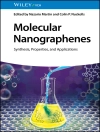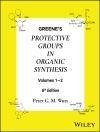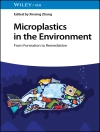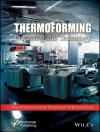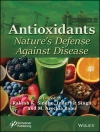The Chemical Transformations of C1 Compounds
A comprehensive exploration of one-carbon molecule transformations
The chemistry of one-carbon molecules has recently gained significant prominence as the world transitions away from a petroleum-based economy to a more sustainable one. In The Chemical Transformations of C1 Compounds, an accomplished team of chemists delivers an in-depth overview of recent developments in the field of single-carbon chemistry. The three-volume book covers all major C1 sources, including carbon monoxide, carbon dioxide, methane, methanol, formic acid, formaldehyde, carbenes, C1 halides, and organometallics.
The editors have included resources discussing the main reactions and transformations into feedstock chemicals of each of the major C1 compounds reviewed in dedicated chapters. Readers will discover cutting-edge material on organic transformations with Me NO2, DMF, DCM, methyl organometallic reagents, CCl4, CHCl3, and CHBr3, as well as recent achievements in cyanation reactions via cross-coupling.
The book also offers:
- Thorough introductions to chemical transformations of CH4, methods of CH4 activation, chemical transformations of CH3OH and synthesis alkenes from CH3OH
- Comprehensive explorations of the carbonylation of Me OH, CH2O in organic synthesis, organic transformations of HCO2H, and hydrogen generation from HCO2H
- Practical discussions of the carbonylation of unsaturated bonds with heterogeneous and homogeneous catalysts, as well as the carbonylation of C(sp2)-X bonds and C(sp3)-X bonds
- In-depth examinations of carbonylative C-H bond activation and radical carbonylation
Perfect for organic and catalytic chemists, The Chemical Transformations of C1 Compounds is also an ideal resource for industrial chemists, chemical engineers, and practitioners at energy supply companies.
Daftar Isi
Volume 1
1 Direct Conversions of Methane via Homogeneous Processes 1
Hui Chen, Anhua Hu, Liang Chang, Qing An, Hui Pan, and Zhiwei Zuo
1.1 Introduction 1
1.2 Formation of Methanol and Its Derivatives 2
1.2.1 Electrophilic Activation 2
1.2.2 Radical-Mediated Activation 9
1.3 Formation of Acetic Acid 11
1.3.1 K2S2O8 Oxidant-Based Systems 12
1.3.2 O2 Oxidant-Based Systems 14
1.3.3 H2SO4 Oxidant-Based Systems 15
1.3.4 Other Oxidant-Based Systems 17
1.4 Formation of Methanesulfonic Acid 17
1.5 Formation of Borylated Products 19
1.6 Formation of Aminated Products 21
1.7 Formation of Alkylated Products 23
1.8 Summary and Conclusions 24
References 26
2 Chemical Transformations of Methanol 31
Zhengkai Chen and Xiao-Feng Wu
2.1 Introduction 31
2.2 Methylation 31
2.2.1 C-Methylation 32
2.3 N-Methylation 42
2.4 Hydroxymethylation 49
2.5 N-Formylation 51
2.6 Methoxylation 54
2.7 The Reactions Using Methanol as the C1 Source 62
2.8 Conclusions 65
References 65
3 Synthesis of Olefins from CH3OH 71
Wenna Zhang, Yingxu Wei, and Zhongmin Liu
3.1 Introduction 71
3.2 Catalysts of Methanol to Olefins 73
3.2.1 ZSM-5 Catalyst with MFI Topology Structure 73
3.2.2 SAPO-34 with CHA Topology Structure 73
3.2.3 Other Catalysts with 8-MR Pore Opening and Cavity Structure 76
3.3 Catalytic Reaction Mechanism of Methanol Conversion 77
3.3.1 Reaction Course of MTO Process 77
3.3.2 Direct Mechanism of Methanol Conversion 78
3.3.2.1 Carbonylation-Based Mechanism 79
3.3.2.2 Methoxymethyl Carbocation Mechanism 81
3.3.2.3 Methane-formaldehyde Mechanism 81
3.3.2.4 Extra-Framework Aluminum-Assisted (EFAL) Initial C—C Bond Formation 83
3.3.2.5 Oxonium Ion-ylide Mechanism 85
3.3.2.6 SMS/TMO-mediated DME/Methanol Activation Mechanism 88
3.3.3 Autocatalysis Character of Methanol Conversion 88
3.3.4 Indirect Mechanism of Methanol Conversion 90
3.3.4.1 Hydrocarbon Pool Mechanism 91
3.3.4.2 Dual-cycle Mechanism 97
3.3.4.3 Cyclopentadienes-Based Cycle 100
3.3.5 Evolution from Direct Mechanism to Indirect Mechanism 102
3.3.6 Reaction Network of MTO Process 105
3.4 Deactivation of MTO Reaction 107
3.4.1 Low-temperature Deactivation Mechanism of SAPO-34 in MTO Reaction 108
3.4.2 High-temperature Deactivation Mechanism of SAPO-34 in MTO Reaction 109
3.4.3 A Cage-passing Growth Deactivating Model on SAPO-34 112
3.5 DMTO Process Developments 115
3.5.1 Scale-up Synthesis of DMTO Catalyst 115
3.5.2 Industrial Test of DMTO Technology 115
3.5.3 DMTO Technology Commercialization 117
3.5.4 DMTO-II Technology 117
3.5.5 DMTO-III Technology 118
3.6 Conclusions and Outlook 119
Acknowledgments 119
References 119
4 Carbonylation of Methanol: A Versatile Reaction 127
Dipak K. Dutta
4.1 Introduction 127
4.2 Carbonylation of Methanol to Produce Acetic Acid 131
4.2.1 Industrial Processes 131
4.2.1.1 The Cobalt-Based BASF Process 131
4.2.1.2 Rhodium-Catalyst-Based Monsanto Carbonylation Process 132
4.2.1.3 The Iridium-Based Cativa Process of BP Chemicals 135
4.2.2 Laboratory Processes 137
4.2.2.1 Homogeneous Catalysts 137
4.3 Conclusion and Future Aspects 151
Acknowledgments 152
References 152
5 Formaldehyde as C1 Synthon in Organic Synthesis 157
Wanfang Li and Xiao-Feng Wu
5.1 Introduction 157
5.2 Formaldehyde as Methylenes (–CH2–) 159
5.2.1 Methylenes Linking Two Aryl Groups 159
5.2.2 Methylenes Linking Two Alkyl Groups 165
5.2.3 Methylenes Linking Carbon and Nitrogen 167
5.2.3.1 Mannich-Type Reactions 167
5.2.3.2 Formation of Propargyl Amines 167
5.2.3.3 Synthesis of Allyl and Benzyl Amines 172
5.2.4 Methylenes Linking Carbon and Oxygen 176
5.2.4.1 Oxa-Pictet–Spengler Reaction 176
5.2.4.2 Formation of Propargyl Alcohols 178
5.2.5 Methylenes Linking Carbon and Halogens 179
5.2.6 Methenynation Reactions (=CH2) 180
5.2.6.1 Formation of Terminal Allenes 180
5.2.6.2 Methenynation of Allylic and Benzylic Positions 182
5.2.6.3 Methylenynation of Carbonyls via Wittig Reaction 183
5.2.6.4 α-Methylenynations of Carbonyls 184
5.2.7 Methylenen Linking Two Heteroatoms 185
5.3 Hydroxymethylation Reagent (–CH2OH) 192
5.3.1 Hydroxymethylation of Carbonyl Substrates 192
5.3.2 Prins and Carbonyl-Ene Reactions with Formaldehyde 199
5.3.3 Morita–Baylis–Hillman Reaction with Formaldehyde 205
5.3.4 Reductive Hydroxymethylation of Alkenes and Alkynes Allenes 206
5.3.5 Hydromethoxylation of Organometallics 211
5.3.6 Hydromethylation of Miscellaneous Compounds 213
5.4 As CO Source 217
5.4.1 Carbonylation Reactions 217
5.4.1.1 Carbonylation of Aryl Halides 217
5.4.1.2 Carbonylation of Alkenes and Alkynes 220
5.4.2 Hydroformylations Reactions 223
5.4.3 Formaldehyde for Ketone Synthesis 227
5.5 As Hydrogen Donor and Accepter 227
5.6 As Methylation and Formylation Reagents 230
5.6.1 Methylation Reagent 230
5.6.2 Formylation Reagent 232
5.7 Formaldehyde as Ligand and Reductant in Organometallic Chemistry 234
5.8 Summary and Outlook 235
References 236
6 Organic Transformations of HCO2H 249
Zhiping Yin and Xiao-Feng Wu
6.1 Introduction 249
6.2 Providing Carbonyl Moiety 249
6.2.1 Reactions with Aryl Halides or Triflates 250
6.2.2 Reactions with Alkenes or Alkynes 254
6.2.3 Reactions with Amines 256
6.3 Providing Carboxyl Moiety 257
6.3.1 Reactions with Aryl Halides 257
6.3.2 Reactions with Arenes 258
6.3.3 Reactions with Alkenes or Alkynes 260
6.4 As Hydrogen Source 263
6.4.1 Reducing Alkenes or Alkynes 263
6.4.2 Reducing Carbonyl Groups 268
6.4.3 Hydrogenolysis Benzylic C—O Bonds 272
6.4.4 Reducing Nitro Groups 275
6.4.5 Reducing Unsaturated C—N Bonds 278
6.5 Other Reactions 281
6.6 Conclusion 283
References 283
7 The Multifunctional Materials for Heterogenous Carboxylation: From Fundamental Understanding to Industrial Applications 289
Yunjie Ding, Li Yan, and Xiangen Song
7.1 Introduction 289
7.2 Hydroformylation of Olefins 289
7.2.1 Heterogeneous Hydroformylation 290
7.2.1.1 Hydroformylation of Ethylene 290
7.2.1.2 Hydroformylation of Propene 292
7.2.1.3 Hydroformylation of Butenes 293
7.2.1.4 Hydroformylation of Long-Chain Olefins 298
7.2.1.5 Asymmetric Hydroformylation 301
7.3 Heterogeneous Carbonylation 303
7.4 Other Catalytic Reactions 307
7.4.1 Asymmetric Hydrogenation 307
7.4.2 Alkoxycarbonylation 308
7.4.3 Suzuki–Miyaura Coupling Reactions 311
7.4.4 Oxidative Heck Reaction 312
7.4.5 Hydrogenation 313
7.4.6 Chemoselective Decarbonylation of Aldehydes 315
7.4.7 Cyclic Addition Reaction of CO2 and Epoxides 315
7.5 Summary and Perspective 319
Acknowledgments 319
Conflict of Interest 319
References 319
8 Recent Hydrocarbonylation of Unsaturated Hydrocarbons with Homogeneous Catalyst 325
Kaiwu Dong and Kuiling Ding
8.1 Introduction 325
8.2 Transition Metal-Catalyzed Hydroformylation 327
8.2.1 Cobalt-Catalyzed Hydroformylation 328
8.2.2 Rhodium-Catalyzed Hydroformylation 332
8.2.3 Ruthenium-Catalyzed Hydroformylation 352
8.2.4 Iron-, Osmium-, and Iridium-Catalyzed Hydroformylation 357
8.2.5 Metal-Free Hydroformylation 360
8.3 Transition Metal-Catalyzed Hydrocarbonylation (Reppe Carbonylation) 361
8.3.1 Palladium-Catalyzed Hydrocarbonylation 361
8.3.1.1 Palladium-Catalyzed Hydrocarbonylation of Alkenes 361
8.3.1.2 Palladium-Catalyzed Enantioselective Hydrocarbonylation of Alkenes 383
8.3.1.3 Palladium-Catalyzed Hydrocarbonylation of Alkynes 386
8.3.1.4 Palladium-Catalyzed Hydrocarbonylation of In Situ Generated Alkenes 393
8.3.2 Nickel-Catalyzed Hydrocarbonylation 395
8.3.3 Ruthenium- and Platinum-Catalyzed Hydrocarbonylation 397
Acknowledgments 399
List of Abbreviations 399
References 400
9 Carbonylation of C(sp2)—X Bonds 415
Huaanzi Hu, Jian Liu, and Qiang Zhu
9.1 Introduction 415
9.2 Common Aspects 415
9.2.1 Types of C(sp2)—X 416
9.2.1.1 Aryl/Vinyl Halides 416
9.2.1.2 Aryl/Vinyl Pseudohalides 417
9.2.2 Catalysts or Initiators 418
9.2.2.1 Noble Metal Catalysts 418
9.2.2.2 Non-Noble Metal Catalysts 420
9.2.2.3 Photoinitiated Radical Process 421
9.2.2.4 Other Radical Process 425
9.2.3 CO Sources 425
9.2.3.1 Metal Carbonyl Complex 426
9.2.3.2 Formic Acid and Its Derivatives 426
9.2.3.3 Others 428
9.2.3.4 The Two-Chamber System 431
9.2.4 Nucleophiles 431
9.3 Domino Carbonylations 434
9.3.1 Intramolecular Domino Carbonylations 434
9.3.2 Intermolecular Domino Carbonylations 436
9.4 Double Carbonylations 438
9.4.1 Adjacent Carbonyl Groups 439
9.4.2 Nonadjacent Carbonyl Groups 441
9.5 Asymmetric Carbonylations 442
9.6 Applications 445
9.6.1 Synthesis of Heterocycles 445
9.6.2 Drugs or Natural Products 448
References 452
10 Carbonylation of C(sp3)—X Bonds Utilizing CO 459
Renyi Shi and Aiwen Lei
10.1 Introduction 459
10.2 Carbonylation of Allyl Compounds 460
10.2.1 Allyl Metallic Reagents 460
10.2.2 Allyl Halides 464
10.2.3 Allyl Esters 466
10.2.4 Allyl Ethers 472
10.2.5 Allyl Alcohols 473
10.2.6 Allyl Amines 477
10.3 Carbonylation of Benzylic Compounds 477
10.3.1 Benzyl Halides 477
10.3.2 Benzyl Alcohol 487
10.3.3 Benzyl Amines 490
10.3.4 Benzyl-H 491
10.3.5 Others 492
10.4 α-Carbonylation of Carbonyl Derivatives 493
10.4.1 α-Halide Carbonyl Derivatives 493
10.4.2 α-H Carbonyl Derivatives 494
10.4.3 Other 494
10.5 Carbonylation of Aliphatic Alkyl Compounds 495
10.5.1 Alkyl Metallic Reagents 495
10.5.2 Aliphatic Alkyl Halides 496
10.5.3 Carbonylation of Heterocycles 503
10.5.4 Aliphatic C—H Bonds 510
10.6 Conclusion 515
References 516
Volume 2
11 Carbonylative C—H Bond Activation 533
Angela Kaiser and Bruce A. Arndtsen
12 Recent Advances in Radical Carbonylation 567
Shuhei Sumino, Takahide Fukuyama, and Ilhyong Ryu
13 Asymmetric Carbonylation Reactions 611
Shao-Tao Bai, Jialin Wen, and Xumu Zhang
14 Carbonylative Synthesis of DPC (Diphenyl Carbonate) 667
Raffaella Mancuso and Bartolo Gabriele
15 Oxidative Carbonylation of Amines 687
Yanwei Cao, Lin He, and Chungu Xia
16 Carbonylation of Nitroarenes and Related Compounds 721
Fabio Ragaini and Francesco Ferretti
17 Zeolite-Catalyzed Carbonylation of Dimethyl Ether 763
Ensheng Zhan, Zhiping Xiong, and Wenjie Shen
18 Complex Natural Product Total Syntheses Facilitated by Palladium-Catalyzed Carbonylative Cyclizations 793
Yiyang Luo, Lei Li, and Mingji Dai
19 Metal-Catalyzed Alternating Polymerization Reactions with Carbon Monoxide 827
Werner Oberhauser
20 CO Hydrogenation 861
Jingting Hu, Wei Zhou, Kang Cheng, Qinghong Zhang, and Ye Wang
21 Carboxylation with Carbon Dioxide as a C1 Source via Carbon–Carbon Bond Forming Reactions 909
Tetsuaki Fujihara
22 Cyclization Reactions with CO2 973
Arjan W. Kleij
23 Reduction of CO2 to Formic Acid 1003
Bernard B. A. Bediako, Qingli Qian, and Buxing Han
24 Reduction of CO2 to CO and Their Applications 1027
Karoline T. Neumann, Anne K. Ravn, Martin B. Johansen, Aske S. Donslund, Magnus H. Rønne, Haraldur G. Gudmundsson, and Troels Skrydstrup
Volume 3
25 Hydrogenation of CO2 to Chemicals with Green Hydrogen 1073
Feng Sha, Xinyi Liu, Shan Tang, Jijie Wang, and Can Li
26 Methylation Reactions with CO2 1185
Xiang-Yang Yao, Zhi-Wen Yang, Hong-Ru Li, and Liang-Nian He
27 Using CO2 as –CH– and –CH2– Sources 1217
Xiao-Wang Chen, Yong-Yuan Gui, Yuan-Xu Jiang, Ke Jing, Ya-Nan Niu, Yue-Ming Jiang, and Da-Gang Yu
28 Catalytic Asymmetric Transformation of CO2 1265
Fachao Yan, Jian-Fei Bai, and Yuehui Li
29 Polymerization Reactions with CO2 1305
Wen-Bing Li and Xiao-Bing Lu
30 Transition-Metal-Catalyzed C–CN Cross-Coupling 1337
Murugan Dhanalakshmi and Pazhamalai Anbarasan
31 Recent Advancement in Transition-Metal-Catalyzed Hydrocyanation of Nonpolar Unsaturated Compounds 1367
Rongrong Yu, Kaiwu Dong, and Xianjie Fang
32 Organic Transformations with Me NO2 1397
Debarati Das, Nilam Patil, and Bhalchandra M. Bhanage
33 Applications of DMF as a Reagent in Organic Synthesis 1439
Zechao Wang and Xiao-Feng Wu
34 Advances in the Synthesis of Methylated Products Through Direct Approaches: A Guide for Selecting Methylation Reagents 1475
Yantao Chen
35 Organic Transformations with DCM, CCl4, CHCl3, and CHBr3 and Other Related Reactions 1577
Yunyun Liu and Jie-Ping Wan
36 Trifluoromethylation with CF3I and Other Related Reagents 1609
Xiu-Hua Xu and Feng-Ling Qing
37 The Applications of Dimethyl Sulfoxide as a One-Carbon Source in Organic Synthesis 1647
Chong-Liang Li and Xiao-Feng Wu
Index 1667
Tentang Penulis
Xiao-Feng Wu, Ph D, has published over 400 publications in international journals and is the editor or author of 10 books. He received his doctorate from the Leibniz Institute for Catalysis in Germany.
Buxing Han, Ph D, is Professor and Academician at the Institute of Chemistry, Chinese Academy of Sciences. He has published more than 300 papers and authored over 20 patents. He received his doctorate from the Chinese Academy of Sciences in 1988.
Kuiling Ding, Ph D, is Executive Vice President at Shanghai Jiaotong University. He received his doctorate in 1990 from Nanjing University and is a member of the Chinese Academy of Sciences.
Zhongmin Liu, Ph D, is Director of the Dalian Institute of Chemical Physics and the Qingdao Institute of Bioenergy and Bioprocess Technology. He received his doctorate in Physical Chemistry from the Dalian Institute of Chemical Physics in 1990.


